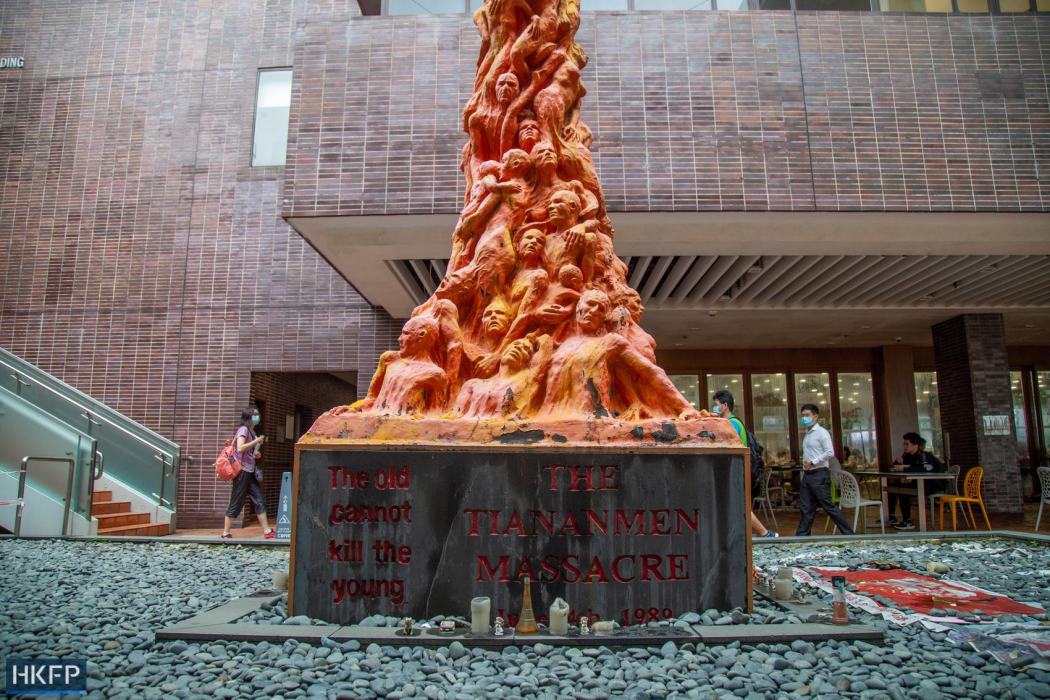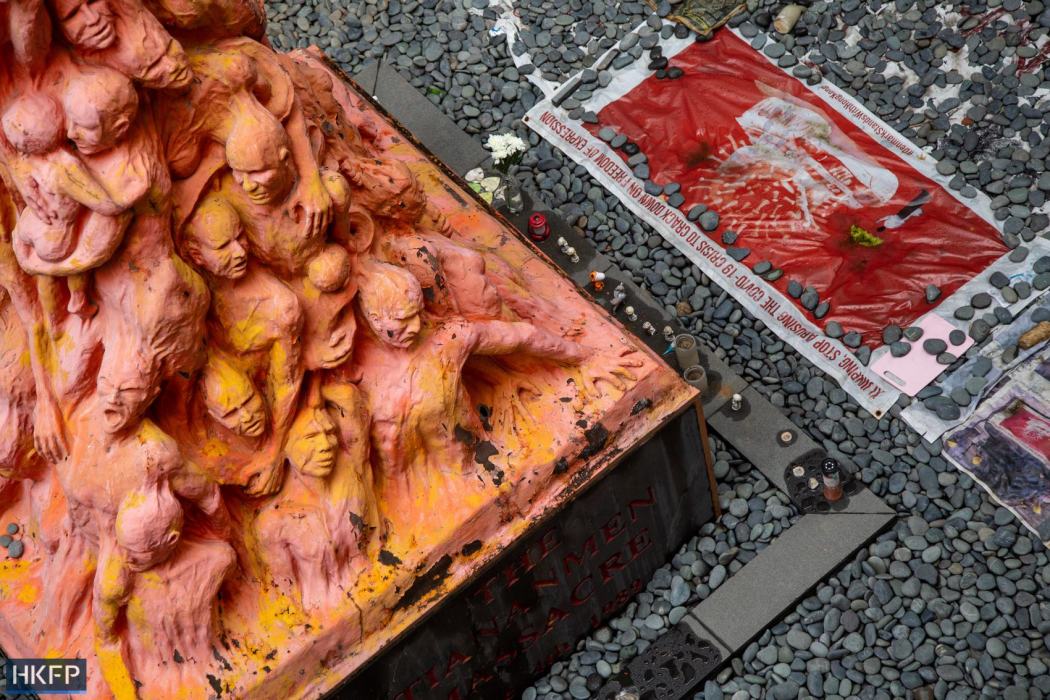A mainland Chinese postgraduate student has been jailed for six months, after she pleaded guilty to attempting to do an act with a seditious intention by planning to display a large banner relating to a 1989 Tiananmen monument on the anniversary of the crackdown.

Twenty-three year old law student Zeng Yuxuan was put behind bars under the sedition law on Monday. She was sentenced a day after admitting her plan to unfurl a nine-metre long vertical banner on a footbridge in Causeway Bay on June 4, the 34th anniversary of Beijing’s crackdown on student-led demonstrations in China.
The postgraduate student was said to have obtained the banner through mainland Chinese human rights activist Zhou Fengsuo, a former student leader during the 1989 democracy movement who is currently based in the US.
The banner display was part of a global campaign led by Danish artist Jens Galschiøt, whose eight-metre sculpture commemorating the victims who died in the 1989 crackdown – the Pillar of Shame – was quietly removed by the University of Hong Kong citing safety concerns in December 2021. It had stood on the campus for 24 years before the removal.
In May, it was seized by the city’s national security police in May as evidence for an incitement to subversion case involving the organiser of Hong Kong’s annual Tiananmen crackdown vigil and its three leading members Lee Cheuk-yan, Albert Ho and Chow Hang-tung.
Zeng was arrested on June 2 in connection with a separate sedition charge. She originally faced one count of doing an act or acts with seditious intent over allegedly mourning the death of Leung Kin-fai, who stabbed a police officer on July 1, 2021 before taking his own life. The charge was withdrawn on Monday.

Police found the Tiananmen monument banner inside a parcel from the US at Zeng’s residence following her arrest. Printed on the banner was an image of the Pillar of Shame with phrases including “The Tiananmen Massacre 1989.”
Prosecutors alleged that Zeng attempted or prepared to incite hatred or contempt against the Chinese authorities together with Zhou and other unspecified people.
Principal Magistrate Peter Law said on Monday that the banner display was an international event held in various cities across the world with a “collective” impact. According to Zeng’s plan, the banner would be displayed on a “sensitive date,” which would have an enhanced influence compared to hanging it on other dates, the magistrate said.
There was “meticulous planning” to showcase the banner as Zeng bought relevant tools, conducted site checks and booked a hotel nearby for the event. She also informed the press about the plan to raise publicity, as well as came up with contingency plans in case her attempt failed, Law said.

The magistrate said the content of the banner was “pointed” and could “evoke emotions,” especially when its target audience was “like-minded individuals” whose “emotions could be easily triggered.”
“The impact [of the banner display] was without geographical boundaries,” Law said.
Galschiøt was described as an influential figure, while Zhou was said to have sent Zeng the tool for committing the offence. The activist also closely followed Zhou’s case, Law said.
Zhou wrote on social media on June 4 that he had to “take full responsibility” for Zeng’s arrest. She “knowingly took the risk” and obtained the banner from him, the activist said, adding she displayed “unwavering courage” and demonstrated “defiance against tyranny” when she was first brought to court.
Law added the fact that Zeng offended while she was on bail for another charge was an “aggravating factor.”
The magistrate adopted nine months as the starting point of Zhou’s sentence and reduced the term by a third as she had pleaded guilty. The postgraduate student, who was detained for more than three months pending trial, was eventually jailed for six months.
Sedition is not covered by the Beijing-imposed national security law, which targets secession, subversion, collusion with foreign forces and terrorist acts and mandates up to life imprisonment. Those convicted under the sedition law – last amended in the 1970s when Hong Kong was still a British colony – face a maximum penalty of two years in prison.
Corrections:
16/04/2024, 3.41 pm: An earlier version of this article mistakenly stated that Zeng was jailed on Monday (September11) and was arrested on June 2. She was jailed on Tuesday (September 12) and was apprehended on June 1. We regret the error.
Support HKFP | Policies & Ethics | Error/typo? | Contact Us | Newsletter | Transparency & Annual Report | Apps
Help safeguard press freedom & keep HKFP free for all readers by supporting our team
























